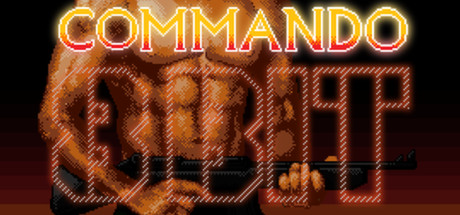What Is a Wedge and What Are Falling and Rising Wedge Patterns?
Yarilet Perez is an experienced multimedia journalist and fact-checker with a Master of Science in Journalism. She has worked in multiple cities covering breaking news, https://www.investorynews.com/ politics, education, and more. Her expertise is in personal finance and investing, and real estate. Awesome description and dissection of the patterns differences.
Therefore, the wedge is like an ascending corridor where the walls are narrowing until the lines finally connect at an apex. We discussed identification and classification of different chart patterns and chart pattern extensions in our previous posts. When the price breaks the upper trend line, the security is expected to reverse and trend higher. Traders identifying bullish reversal signals would want to look for trades that benefit from the security’s rise in price. If you want to adopt this highly-powerful technical trading tool, make sure to master recognizing it on a chart. It is mandatory to spend as much time as possible on the drawing board before jumping into real trades.
Rising Wedge – Bearish Reversal The ascending reversal pattern is the rising wedge which… In an uptrend, most traders consider the rising wedge a reversal pattern. It forms when the price hits higher highs and higher lows, resulting in a contracting price range. The closer the support and the resistance lines get to each other during the uptrend, the slower the momentum gets.
Trend Reversal Chart Example
As you can see from this 10-minute chart of GM, it is in a strong uptrend, which is tested a total of 9-times 9 (the blue line). Along those lines, if you see the stock struggling on elevated volume, it could be a good indication of distribution. If you want to go for more pips, you can lock in some profits at the target by closing down a portion of your position, then letting the rest of your position ride.
There is also the risk to mistake them for other indicators or misinterpret their signals, so the most important thing before starting with them is to first master the basics with paper money. In both cases, we enter the market after the wedges break through their respective trend lines. This means that if we have a rising wedge, we expect the market to drop an amount equal to the formation’s size. If we have a falling wedge, the equity is expected to increase with the size of the formation. For this reason, it is commonly known as a bullish wedge if the reaction is to the upside as a breakout, aka a falling wedge breakout. Wedges can serve as either continuation or reversal patterns.
- As you can see, the price came from a downtrend before consolidating and sketching higher highs and even higher lows.
- Besides, the volume should be decreasing – a sign of divergence with the price.
- It forms when the price hits higher highs and higher lows, resulting in a contracting price range.
- The example below shows where the price breaks the lower support trend line (1).
- It is not to say that the wedge and the triangle can’t serve both functions.
- A rising wedge is formed when the price consolidates between upward sloping support and resistance lines.
Both support and resistance trendlines are upward sloping, but they converge as the pattern matures, creating a wedge shape. A decrease in trading volume as the pattern progresses can serve as additional confirmation of an impending reversal. In trading, a bearish pattern is a technical chart pattern that indicates a potential trend reversal https://www.forex-world.net/ from an uptrend to a downtrend. These patterns are characterized by a series of price movements that signal a bearish sentiment among traders. 📍Bear Flag 🔸 A small rectangular pattern that slopes against the preceding trend🔸 Forms after a rapid price decline… A wedge is a price pattern marked by converging trend lines on a price chart.
Uptrends & Downtrends
When it comes to the falling wedge, the picture is the opposite as the resistance line is steeper than the support one. Understandably, the main difference is that, unlike its rising counterpart, the falling wedge signals an upcoming bullish trend reversal. Symmetrical triangles, ascending and descending triangles – these and others can often leave you scratching your head exactly what pattern is unfolding on the chart. To avoid such scenarios, just look at the slope, and you will have the answer. An alternative way to trade the rising wedge is by waiting for the price to fall below the support line.
As the case with other indicators, the more convincing the break is, the more stable the sentiment is. The lines are constructed by connecting two or more separate highs and lows. Mean Reversion Definition Reversion to the mean, or “mean reversion,” is just another way of describing a move in stock prices back to an average. Depending on the wedge type, the signal line is either the upper or the lower line of the pattern. In other words, effort may be increasing, but the result is diminishing. A good upside target would be the height of the wedge formation.
In these cases, traders start looking for opportunities to sell. The best place to practice any strategy is in a market simulator. We suggest flipping through as many charts of the more liquid names in the market.
The rising wedge as a reversal pattern is one of the classic setups in technical analysis, often signaling a bearish turn in the market. This pattern is generally found at the end of an uptrend and serves as a warning that the trend may soon reverse to the downside. It should be noted, like most approaches and models in finance and investment, that patterns like these are not 100% reliable. While the rising wedge pattern is a well recognized tool among traders and investors for its predictive power, it should be used as part of a diversified trading or investment strategy. Since the rising wedge is a bearish pattern, aggressive traders will typically wait for price to break below the lower support line before they will execute a short position.
What Happens at The End of a Rising Wedge?
As previously stated, during an uptrend, falling wedge patterns can indicate a potential increase, while rising wedge patterns can signal a potential decrease. Notice that the two falling wedge patterns on the image develop after a price increase and they play the role of trend correction. The trend lines drawn above and below the price chart pattern can converge to help a trader or analyst anticipate a breakout reversal. While price can be out of either trend line, wedge patterns have a tendency to break in the opposite direction from the trend lines. The pattern typically forms after a sustained uptrend, indicating potential exhaustion among buyers.
This usually occurs when a security’s price has been rising over time, but it can also occur in the midst of a downward trend as well. If you are looking for an indicator with a relatively low risk and high reward ratio (as much as this can be a thing in the trading world), the rising wedge might be your new favorite. If applied correctly, both indicators can provide good returns and an optimal risk/reward ratio. They are relatively easy to understand as they outline stop, entry, limit, and take-profit levels very clearly. Many traders adopt this approach since it provides an optimal mix of risk and profit opportunities. It can vary depending on the trader’s profile and risk appetite.
Never give up on this difficult way which we are going to overcome together! How to use Elliott waves instead of classical chart patterns. This is the natural exposure why the chart patterns are garbage. However, many traders feel intimidated by both indicators when starting for the first time.
Rising Wedge vs. Falling Wedge
Some would shoot for the stars, thus accept more risk, while others will be more conservative. Once the lines converge in the apex, https://www.currency-trading.org/ the price embraces a downward movement. The convergence between both lines takes place toward the upper right part of the figure.
2.若您需要商业运营或用于其他商业活动,请您购买正版授权并合法使用。
3.如果本站有侵犯、不妥之处的资源,请在网站右方客服联系我们。将会第一时间解决!
4.本站所有内容均由互联网收集整理、网友上传,仅供大家参考、学习,不存在任何商业目的与商业用途。
5.本站提供的所有资源仅供参考学习使用,版权归原著所有,禁止下载本站资源参与商业和非法行为。
游戏库 » What Is a Wedge and What Are Falling and Rising Wedge Patterns?





